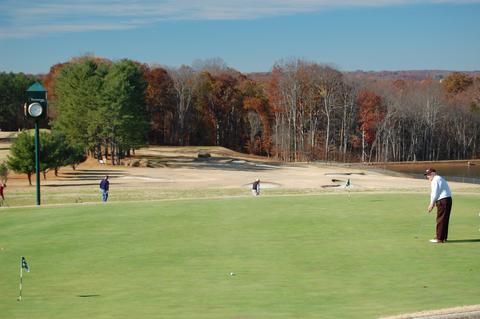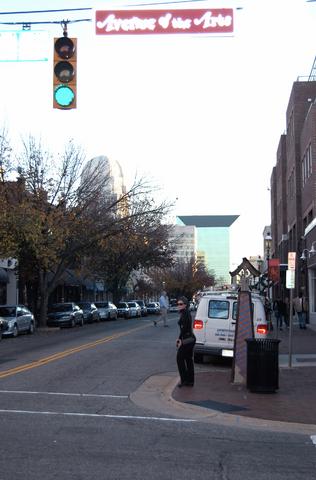
North Carolina is the sixth fastest growing state in the land. Its wide-ranging array of golf courses includes some outstanding and reasonably priced daily fee options, like Tanglewood Park near Winston-Salem.
I arrived in Pawleys Island, SC, this week just in time for the front page headline in Myrtle Beach's The Sun News: "Populations of Carolinas among the fastest growing." South Carolina's population growth in the last year was 4.41%, a bit more than in the prior year, when it was 4.33%. North Carolina's population grew 8.87% and 9.06% respectively in the last two years, making it the 6th fastest growing state in the land, behind (in order) Nevada, Arizona, Utah, Idaho and Georgia. South Carolina was ranked the 10th fastest growing state.
All these numbers made me hungry for more data, and I visited the U.S. Census Bureau site to sate my appetite. Some interesting stuff there that you can check out yourself; if you are American, then you are paying for the service, so why not use it? The following are a few highlights, but keep in mind the Census Bureau made these predictions based on the 2000 census. As you may have noticed, a few things have occurred in the housing market since then which could slow the migrations, although it should not affect the general direction of the population flows.
According to Census Bureau projections , Nevada will be the fastest growing state between now and 2030, up a whopping 114%, albeit on a relatively small population base. Since these projections were made before flipping condos in Las Vegas supplanted gambling and prostitution as the most attractive money-making deals -- at least for about a nanosecond -- we wonder what effect all those empty condos will have on the growth numbers. Arizona takes second prize in the growth wars with a predicted increase of 109% and just over 5.5 million new residents. You have to wonder how that prediction might change if, say, a build-the-fence-high new U.S. President is elected.
Also, Presidential candidate and Arizona senator John McCain, who seems to have the most compassionate plan regarding immigration, is not so sanguine when it comes to water. He has accused California of stealing some of his own state's water supply. Although California will grow only 37% in the 30 years time frame, that still represents an additional 12.5 million thirsty people. What effect
Sometime in the next few years, Florida will finally supplant New York as the third most populous state, the Census Bureau indicates, assuming no catastrophic hurricanes, no catastrophically higher premiums on catastrophe insurance, no catastrophic car jams on the state's under-built roadways, and no catastrophic flight to the Carolinas by fed-up retirees. You might detect a certain theme here. You can't beat the weather in Florida, except perhaps in July and August, but is the quality of weather more important than the quality of life? Do you really want to be forced to endure the 4:30 p.m. early-bird special at the local smorgasbord just to avoid stop-and-go traffic during the normal dinner time and rush hour?
And speaking of water, when I traveled to the state in 1980, I recall that my brother, then an employee with the U.S. Environmental Protection Agency, warned me not to drink the water in Panama City and a host of other cities in Florida. In short, the Sunshine State has grown way too quickly for its overwhelmed local officials to accommodate the demands of three generations of retirees from New York and elsewhere. Note to officials in Asheville and Myrtle Beach: Get ready because many of the so-called disillusioned "halfbacks" are heading your way ("halfbacks" as in New Yorkers who moved to Florida and are now bouncing halfway back).
North Carolina will move from 11th place in total population to 7th by 2030, according to the Census Bureau, reflecting the state's attraction to young workers and families, especially in the Charlotte and Raleigh/Durham areas, its reasonable tax structure, its generally excellent schools (traditionally an oxymoron in other southeastern states) and the best selection of golf courses and communities in the nation, with great options in the mountains, on the coast and everywhere in between. Also, prices in many suburbs of the growing cities of North Carolina, especially 30 to 45 minutes from the city centers, are still reasonable. I recently visited Winston-Salem and was surprised to find some nice-looking four bedroom homes under $400,000 in a few of the communities. Although the city of Winston-Salem does not offer the sophistication or range of activities of Charlotte and Raleigh, it could fill the bill for a young family or retirees who want a quality lifestyle and have a smidgen of pioneering spirit.
I'll continue some reflections on the census data in coming days.

North Carolina cities like Winston-Salem are making their downtown areas more attractive to the thousands of people moving to the state.























